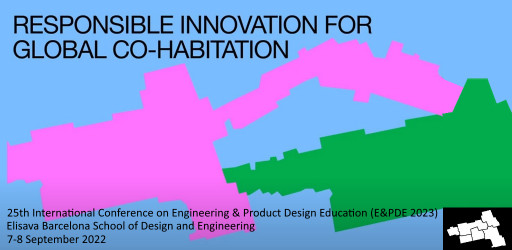LONGITUDINAL EVALUATION OF SELF-ASSESSMENT AND PEER REVIEW IN A CAPSTONE COURSE
Törlind, Peter; Eklöf, Lars; Larsson, Lisa
Type:
Year:
2023
Editor:
Buck, Lyndon; Grierson, Hilary; Bohemia, Erik
Author:
Series:
E&PDE
Institution:
Luleå University of Technology, Sweden
Section:
Responsible innovation in design and engineering education
DOI number:
ISBN:
978-1-912254-19-4
Abstract:
This paper presents a longitudinal study over more than ten years with more than 500 students following the implementation and evaluation of peer review and self-assessment. By peer review, students spend time reading and assessing other people's work, learning to determine what is good and bad (Gibbs 1999). Peer review can also be combined with self-assessment. Boud (2013) highlights that self-assessment contains two parts, where the first part is often neglected: • The involvement of students in identifying standards and/or criteria to apply to their work • Making judgements about the extent to which they have met these criteria and standards The second part may be useful for developing self-assessment skills. To fully embrace the idea of self-assessment, it is vital to teach students the characteristics of good work, or as Boud states: ‘It requires them to consider what are the characteristics of, say, a good essay or practical work and to apply this to their own work’ Boud (2013, p. 12). The implementation of peer review and self-assessment has been done in a third-year capstone design course. The aim is to integrate knowledge and skills acquired previously in the program and focus on improving their teamwork and interpersonal skills in a product design project. In the course, students work in small teams (3-4 students) that go through a design process with four phases. Students know when and what they should deliver at each stage gate, and then it's up to them to decide which methods are suitable for performing the design. After each phase, students present their progress and receive critique during four design reviews. They also produce a 4-page written Process Memo (PM). The course ends with a presentation and documentation of the final concept. For each phase, a facilitated peer review and formative feedback from the teaching team are used to improve the written process memos. In 2016, we introduced self-assessment, where students also had to assess their own work. Inspired by the work from Boud (2013), we recently introduced a part where the students identify and develop their own criteria to assess their own work. Feedback shows that most students appreciate the peer review sessions and believe it has improved the quality of the written documentation. The feedback also highlights that students think that the feedback from others is not the essential part: by reading others' documentation, they gain a better understanding of how good documentation is written. In agreement with many other studies (Taras, 2001), the student also appreciates the effort to assess their work. It is also interesting to see that students have been very good at assessing their capabilities and effort over the last five years. The difference between the self-assessment and teachers' final assessment was about 5%. Boud, D. (2013). Enhancing learning through self-assessment. Gibbs, G. (1999). Using Assessment Strategically to Change the Way Students Learn. Assessment Matters in Higher Education: Choosing and Using Diverse Approaches, 41. Taras, M (2001) The Use of Tutor Feedback and Student Self- assessment in Summative Assessment
Keywords:





